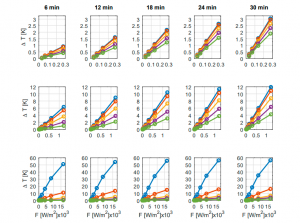This article discusses the topic of 5G radiation. It is a non-ionizing electromagnetic radiation. Since 5G radiation is small, it doesn't have the ability to break chemical bonds in biological tissues or cause any changes to cells. 5g radiation symptoms 's not clear whether 5G radiation can affect the risk of developing skin cancer. No evidence exists to suggest that it can cause other illnesses.
Radiation from high-frequency millimeter waves
High-frequency millimeter wave radiation emitted by mobile devices and wireless networks could cause adverse health effects for human beings. There are many ways this radiation could cause harm. In some instances radiation may cause damage to the person's DNA. In other instances, it may cause damage to other parts within the body such as the brain.
Recent studies have shown that 5G technology may cause thermal heating in tissues. This is why researchers from the International Council on Non-Ionizing Radiation Protection (ICNIRP) has asked for a review of the existing thermal and biological safety standards. The current standards for exposure do not protect people from excessive heating when exposed to millimeter wave pulses.
Skin cancer risk
There isn't a definitive answer at present to the question of whether 5G radiation can cause skin cancer. However, it is believed that 5G RF EMFs behave like high-LET ionizing radiations. This means that they can cause excessive levels of free radicals that can be found in the skin. The FCC has not yet issued any specific guidelines regarding the dangers of 5G technology, and the debate on the subject continues.

Although there are a number of studies that examine the effects of radio waves with higher frequencies on human health, they have remained largely limited in extent. However, there is concern over the effects of millimeter-wavelength exposure on oxidative stress and gene expression. 5g radiation symptoms may extend to the skin and various organs, like the brain.
Impact on other diseases
The latest generation of technology for wireless called 5G is rapidly growing in popularity However, researchers are concerned about the potential health risks. The technology will significantly increase the amount of electromagnetic radiation found in our surroundings. This is a concern that has sparked debates in many countries including Switzerland. In September 2017 390 doctors and scientists were in favor of the suspension of 5G technology. This call was ignored by the European Commission, which is in charge of monitoring the use of technology like 5G.
In the end, it is necessary to conduct more research to study the health implications of 5G. However, studies have shown that 5G isn't causing the same adverse effects on humans as the radiation from older mobile networks. Additionally, 5g radiation symptoms does not transmit an entirely new strain of coronavirus. Additionally it does not make people more vulnerable to infections caused by viruses.
Measurement of exposure
The measurement of exposure to radiation from 5G is a vital aspect in the security of 5G networks. There are two methods to determine exposure. One is to measure the RF power absorption by human tissue. The other is measuring the amount of radiofrequency energy emitted through an object. The term "radiofrequency energy" (RF) can be described as an energy source that originates directly from radio receivers.
In the United States, the FCC has implemented a limit on the energy density of mobile devices running 5G. The tests are able to test the power density of just a few inches, and the FCC does not require the measurement of each beam. However the power density of each beam can be determined by computer simulation. The most likely scenario is then selected according to the design of each beam.
Limitations of the study
There's been plenty of discussion over the impact of 5G radiation on the health of people. In the case of 5G, for instance. Swiss government, for instance, has produced an analysis that concludes the technology is not likely to cause adverse health effects in the short term, but there are no studies that show long-term negative effects. However, this report also contains a number of problems that include biased reporting.
The strength and frequency of radio waves that transmit energy will depend on the frequency. The energy that is carried by a millimetre waves will be the same as that of current radio waves, but they are much smaller in size and better suited for high-density environments because they cannot be easily block by walls or glass. Urban areas with high density would require a large number of smaller, low-power locations, and suburban areas will benefit from 5G networks that operate at lower frequency.
